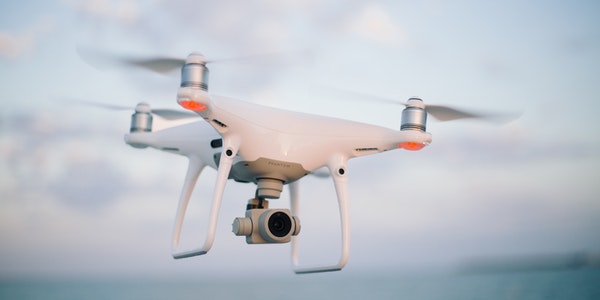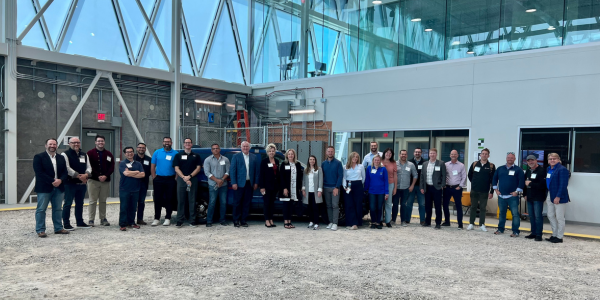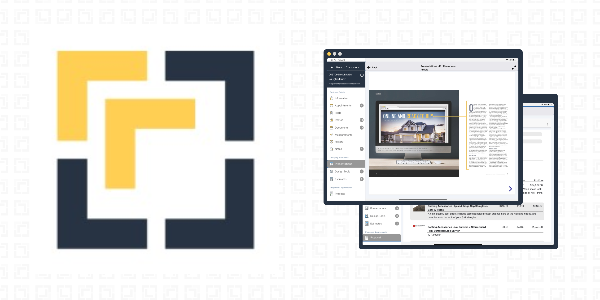Drones in Roofing

By John Kenney, Cotney Consulting Group.
Drones are now part of the roofers’ world, allowing you to conduct roof inspections in winter when snow and ice make it risky and measure a roof quickly without climbing a ladder.
Professional roofers have done a stellar job of putting drone technology to good work, making precision one of the advantages. Drones also make roof estimating much more straightforward. And the photographs you get from aerial work, with the permission of the homeowner, can be used in your marketing. For example, before and after photos of a re-roofing job can be compelling to potential customers. So can photographs of newly installed designer shingles on a roof that once looked shabby.
With this growing draw toward drone technology, some laws and regulations in both the U.S. and Canada must be followed. Roofers, like other professionals, are considered commercial drone users and must be licensed and follow the rules to operate a drone.
While getting licensed may seem daunting, it is not as difficult as it may seem. But, first, get to know the laws governing commercial drone use, federal and state and local laws that may affect a roofer.
Who needs a license?
Anyone using a drone in the U.S. work or business must be licensed. The license is called a Remote Pilot Certificate.
In Canada, the license is called Remotely Piloted Aircraft System, or RPAS, and if using it for commercial purposes, you must be licensed.
How do you get a license?
A commercial operator must be at least 15 years old, operate a drone safely and be fluent in English, including in writing and reading.
You also must pass:
- Transportation Safety Administration (TSA) security screening
- The Aeronautical Knowledge and Safety Test, also called the Part 107 test, includes important safety and regulatory information.
How to get a drone license in Canada
In CanadadDrone, pilots who hold a Pilot Certificate – Advanced Operations can conduct basic and advanced operations. First, you learn the test material, take the exam on a government website, and take the online exam. Once you pass and pay the $25 fee, you will be issued a Pilot Certificate – Advanced Operations.
Getting permission to fly over a homeowner’s roof
Many states and Canadian provinces require permission to fly a drone over someone’s house. Getting verbal consent may not be enough to protect you legally.
Get permission in writing. Have a lawyer draft the consent form and a waiver to limit your liability for damages. Even if you have permission to fly over your client’s home, it is still a privacy violation to fly the drone over a neighbor’s house.
Laws governing drones in the U.S.
The Federal Aviation Administration, or FAA, governs the laws for drones in the U.S. The drones are referred to as Unmanned Aircraft Systems or UAS. The laws in the U.S. are considered more complicated and stringent than the laws in Canada.
Roofers using drones for commercial work should strive to use a UAS that weighs under 55 pounds, only requiring the Part 107 drone rules.
Part 107 rules:
- All commercial drone pilots must have a Remote Pilot Certificate
- All commercial drones must be registered with the FAA
- Pilots must fly drones below 400 feet, which is ample for surveying residential rooftops
- Fly only in uncontrolled airspace, or Class G Airspace, not controlled by an airport
- Never break line of sight with your drone for safety.
- Do not operate a drone while sitting inside a vehicle
- Do not fly drones at night, once the sun is entirely below the horizon
- Do not fly drones directly over people
- Always give the right of way to aircraft
Pilots may apply for a Part 107 waiver to get special permission to break one of those rules, including airspace and weight requirements.
Drone speed limit for roofing
There is a speed limit in the U.S. for commercial drones, 100 miles per hour. However, since you will fly in a confined area, there is little risk of breaking this speed limit.
Penalties in the U.S.
There are significant consequences for breaking the laws and regulations for drones in the U.S. The FAA may choose only to educate you about a broken rule. However, it may also revoke your license or fine you up to $27,500 for civil and $250,000 for criminal penalties.
State drone laws
Some states have laws to restrict the use of drones, though few of these laws affect roofers performing roof inspections. Most of these laws involve keeping off personal property, out of parks, and out of the way of emergency vehicles.
Canada’s drone laws:
- Fly only where you can see your drone. Keep the drone within your line of sight for safety.
- Do not fly above 122 meters up in the air, which is double the height of the average two-story house, so it is sufficient for performing roof inspections.
- Do not fly within 5.6 kilometers of any airport or 1.9 kilometers of a helicopter. If a customer lives near an airport, you may not be able to conduct a roof inspection with a drone. Therefore, check the distance before flying.
- Do not fly over emergencies, such as forest fires or vehicle accidents. Instead, wait to fly until emergency vehicles in the vicinity clear out of the area.
- Do not fly over advertised events, such as outdoor soccer games or parades.
Take care not to fly a drone over bystanders or within 30 horizontal feet of bystanders. This requires more strict licensing.
You can reap the benefits if your company can legally and safely use drones for roof inspections and similar work. Just stay up to date on all the latest regulations and licensing requirements.
About John Kenney
John Kenney is the Chief Executive Officer at Cotney Consulting Group. Prior to starting Cotney, John had 45 years of experience in the construction industry. John began his career by working as a roofing apprentice at a family business in the Northeast. Because of his skill and hard work, he progressed from roofing laborer to foreman, estimator, chief estimator, Vice President, and Chief Operating Officer with his various companies. John has worked for multiple Top 100 Roofing Contractors and is intimately familiar with all aspects of roofing production, estimating, and operations. In his last role, John was responsible for the daily operations and performance of a large commercial roofing contractor. During his tenure, John ran business units associated with delivering excellent workmanship and unparalleled customer service while ensuring healthy net profits for his company.























Comments
Leave a Reply
Have an account? Login to leave a comment!
Sign In